Colorful Announces a Bay Trail Mining Motherboard with 8+1 PCIe Slots
by Joe Shields on November 10, 2017 2:00 PM EST- Posted in
- Motherboards
- Intel
- SoCs
- Bay Trail
- Mining
- Cryptocurrency
- PCIe
- Colorful
- J1900
- Custom

This week Colorful has introduced a uniquely designed motherboard, created specifically for the professional miner. One of the first things most will notice is this doesn’t look like most motherboards we see on the market. Instead of conforming to any particular form factor, the C.J1900A-BTC Plus V20 breaks that mold and gives us a markedly rectangular shaped board with a total of nine full-length PCIe slots. Eight of the slots can be used for installing mining graphics card of choice while the blue slot in the middle is where the Celeron J1900 SoC resides on its own PCIe card. The SoC itself has a DDR3 SO-DIMM slot, a mSATA slot, and regular SATA for storage; it also contains the board’s connectivity like networking, USB, and video output.
With the price of a single bitcoin breaking the $7000 barrier recently, GPU mining has not lost its draw of profitability, especially with alt-coins. We have seen a few Intel board partners come out with purpose made mining motherboards cramming in well over a dozen PCIe x1 slots on a single ATX form factor board in order to reduce the per-system cost of mining infrastructure. The lower the outgoing cost, the quicker miners are able to get their money back.
To that end, Colorful introduced the C.J1900A-BTC Plus V20 with enough room for eight cards without the use of riser cables. The board offers double slot spacing between each slot and looks to be around 16-inches in length and almost 7-inches wide throwing aside any standard form factor out of the way. Power is delivered to the cards through a total of sixteen 6-pin PCIe power connectors with eight located on one end and eight around each of the GPU slots.
According to the specifications, the Celeron J1900 SoC is based on Intel's Bay Trail and is a quad-core processor with a base frequency of 2.00 GHz, a burst frequency of 2.42 GHz, and fits within a 10W TDP. It has one DDR3L SO-DIMM slot supporting DDR3L 1066/1333MHz. Graphics duties are handled by integrated GPU (HD Gen 7) with speeds up to 854 MHz. Regarding I/O and expansion, there is one mini PCIe M-SATA slot, as well as a single SATA port and a 4-pin EPS 12V for power. Other connectivity includes two Realtek RTL8111E Gigabit LAN ports, HDMI output, and two USB2.0 ports.
| Colorful C.J1900A-BTC Plus V20 | |
| Warranty | 1 Year |
| Model | C.J1900A-BTX Plus V20 |
| Chipset | Intel Bay Trail |
| Processor | Integrated Celeron J1900 4C/4T, Up to 2.42 GHz, 10W TDP |
| PCIe x16 | 8 |
| VGA | HDMI |
| LAN | 2 x Realtek RTL8111E Gigabit LAN |
| Audio | N/A |
| SATA 6 Gb/s | 1 x mSATA 1 x SATA |
| USB 3.1 Gen 1(Back/Front) | N/A |
| USB 2.0 | 4 |
| 6-pin PCIe Power Headers | 16 |
| Form Factor | Approximately 15 x 7 in. |
Pricing nor availability was listed at the time of this writing. We expect it to be available within the coming months for Colorful customers, although retail availability is unknown.
Related Reading:
Source: Colorful


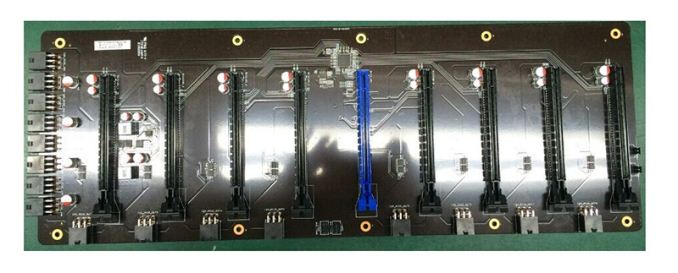
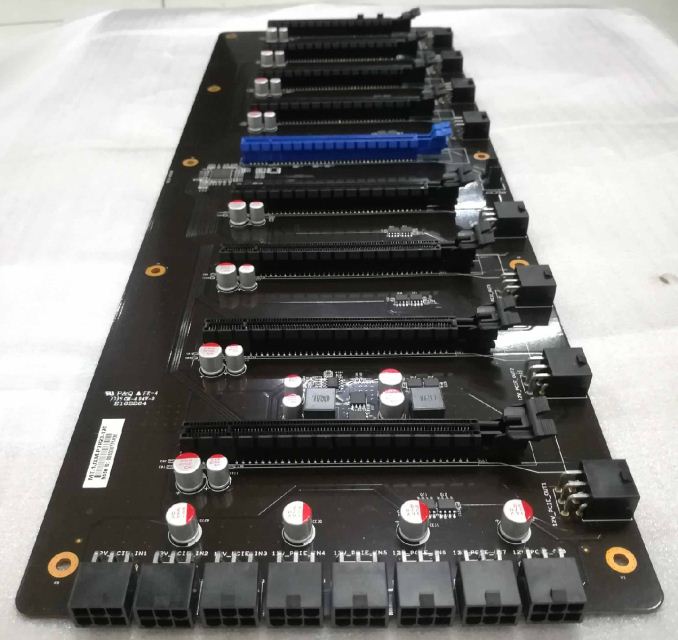
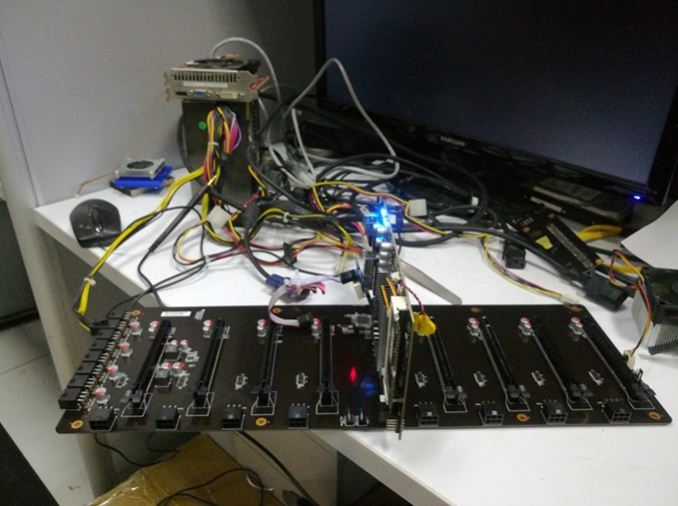
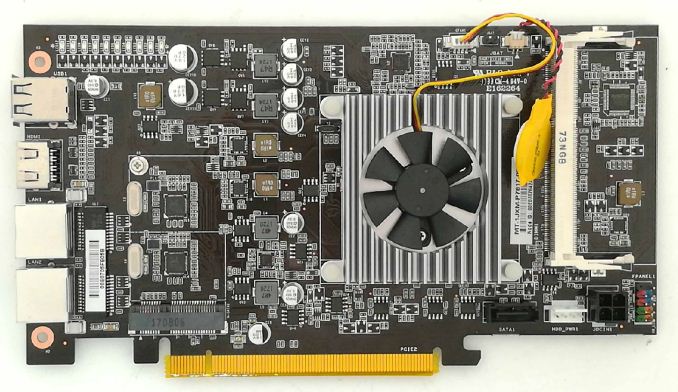

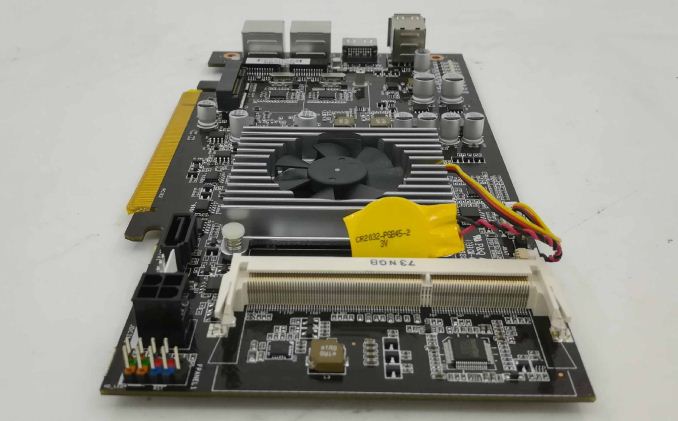








30 Comments
View All Comments
ianmills - Friday, November 10, 2017 - link
NoiceSamus - Saturday, November 11, 2017 - link
This is cool, but it’s really strange they decided to use a 5 year old chip instead of something recent like Apollo Lake (J3060 or so) from last year. Not that the performance really matters but there are some substantial improvements to IME and the networking aspect that would be articulately beneficial for this type of a platform.bill.rookard - Saturday, November 11, 2017 - link
Well, if the purpose isn't CPU bound, then plug in whatever CPU you can get cheapest. The J1900's aren't bad little chips at all. The thing is, if you look at the PCIe... backplane(?) for lack of a better word, if at any time they decided to change the CPU they probably could by just laying out a new daughter card which plugs into the large backplane.Samus - Sunday, November 12, 2017 - link
The main concern would be the lack of VT-D missing from the J1900 but present in the J3000’s. This allows better VM integration to the PCIe switch. If I were putting a rack of these together I’d really want to have everything in remote managed VM’s. Building just one...probably doesn’t make a big difference.bill.rookard - Sunday, November 12, 2017 - link
Well, I guess it depends on what you're going to be running it for. If you're talking about VMs and using it for different purposes other than just mining, then I guess VT-d would be useful. However, if you're going to make a rack of these just for one purpose - mining - then you're only running a single OS on it and then just remote into the specific board running the single running OS to manage things.Also, again, if they wanted to, they COULD almost build some CPU cards mounted with some lower power Xeons which certainly provide the VT-d services and would certainly be more capable of powering several simultaneous VMs. Ultimately, if enough people contact Colorful about it and there's enough demand, perhaps they would be willing to spec up a few thousand boards.
serendip - Sunday, November 12, 2017 - link
There's something that rubs me the wrong way about "mining" - it's just converting electricity and time to tokens, with no real value added. It's just a fiat currency in digital form and it repeats the same stupid mistakes inherent in real-world fiat currencies.Distributed processing for SETI or protein folding is a form of distributed mining with real value. No dollar value is assigned to these activities no matter how beneficial they may be to humanity. What a messed up world we live in...
Mr Perfect - Monday, November 13, 2017 - link
Sounds like an opportunity. Someone should make an alt-coin that somehow calculates something useful while being mined. I have no idea if a blockchain can even do thought though.ikeke1 - Wednesday, November 15, 2017 - link
Gridcoin gives tokens for donating computer time to distributed computing/BOINC projects.Chicken76 - Monday, November 13, 2017 - link
I wonder why they put 2 NICs there.